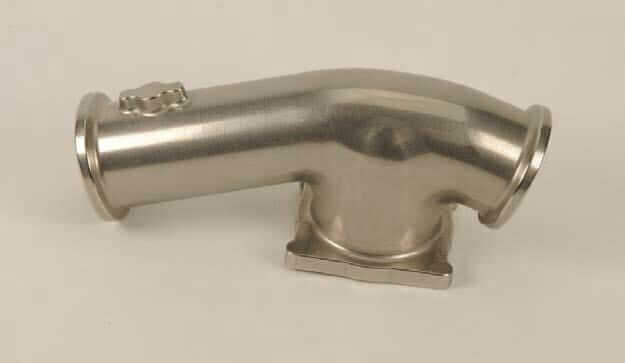Turbofan Engine
Honeywell Aerospace uses Arcam’s A2X machine to work with the nickel-base super alloy Inconel 718, ideal for intense heat and pressure situations. Because the A2X operates above 1,000 degrees Celsius, Honeywell can produce and research parts for extreme temperature environments; the company used the EBM technology with the alloy to redesign a tube on the HTF7000 turbofan engine.
“This process holds the promise of reducing manufacturing costs by 50 percent and dramatically reducing production/delivery time,” says Honeywell Aerospace Engineering Fellow Donald Godfrey.
Get An Exclusive Technical Presentation
“The cost savings are generated by combining eight different part numbers into a design defined with one part number. Delivery can be reduced from months to weeks. Overall, the results are a better-quality part, improved rolled-throughput yield, less inventory, faster production, and a lower cost to produce.”
Honeywell’s redesigned tube for the HTF7000 turbofan engine. Courtesy Honeywell Aerospace. Bradshaw believes that for aerospace, the initial adoption driver is cost reduction using additive manufacturing to redo existing parts, as in the case of the Honeywell tube. In the medical-implant industry, the story is reversed: “They are designing for additive today,” he says.
Read
Latest News
XJet Partners with Straumann to Boost Ceramic AM from Concept to Production - MANUFACTUR3D Read More
Legendary Damascus steel 3D printed by varying temperature of layers Read More
3D Printing in Education Market 2020 In-Depth Analysis of Industry Share, Size, Growth Outlook up to 2025 Read More
Ceramic 3D Printing Market Manufacturer Analysis and Segmentation from 2020-2026 | 3D Cream, Admatec, Emerging Objects Read More
Electron Beam Melting (EBM) Systems
SLA Systems (VAT Based Industrial Grade)
High Precision Wax : MJP
SLS (Polymer) Systems
High Precision Dental 3D Printer & AM Systems
Metal 3D Printers & AM Systems (Laser)
FFF/Filament 3D Printers & AM Systems
Copyright © 2024 Lodestar Innovations Private Limited. All rights reserved.
